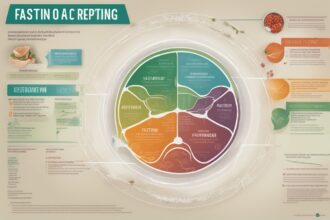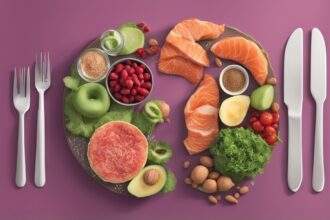Have you ever wondered if there’s a secret to slowing down aging, boosting your energy, or even giving your body a much-needed reset at the cellular level? Well, there just might be—and it’s called autophagy. This natural process, where your cells clean out damaged components and recycle them for energy, is like a spring cleaning for your body. And one of the most powerful ways to kickstart it? Fasting. Today, we’re diving deep into fasting methods to boost autophagy, unpacking how they work, why they matter, and how you can incorporate them into your life safely and effectively. Stick with me as I share science-backed insights, practical tips, and even a few personal anecdotes to help you navigate this fascinating health strategy.
What Is Autophagy and Why Does It Matter?
Autophagy—derived from Greek words meaning “self-eating”—is your body’s built-in recycling system. It’s a cellular process where damaged proteins, organelles, and other junk are broken down and repurposed. Think of it as your cells taking out the trash and turning it into something useful. Research, like that from Nobel Prize winner Yoshinori Ohsumi, has shown that autophagy plays a critical role in preventing diseases like cancer, neurodegenerative disorders, and even aging itself. When autophagy is active, your body runs more efficiently, inflammation drops, and cellular repair goes into overdrive.
But here’s the catch: modern lifestyles—constant eating, high stress, and poor sleep—can suppress autophagy. That’s where fasting comes in. By giving your digestive system a break, fasting triggers a metabolic shift that ramps up this cleaning process. So, how do you harness fasting to supercharge autophagy? Let’s explore the methods that can get you there.
Intermittent Fasting: The Beginner-Friendly Approach
If you’re new to fasting, intermittent fasting (IF) is a great starting point. It’s not about starving yourself; it’s about timing your meals to create windows of eating and fasting. The most popular IF method for autophagy is the 16:8 protocol—fast for 16 hours and eat during an 8-hour window. Imagine you’re dealing with a hectic schedule: you stop eating at 8 PM, sleep through most of the fast, and break it at noon the next day with a nutrient-packed meal. Easy, right?
Studies, such as those published in the journal Cell Metabolism, suggest that even 12-16 hours of fasting can start to stimulate autophagy, especially in the liver and muscle cells. I’ve tried this method myself for months, and I can tell you, the first few days felt odd—my stomach grumbled like an angry bear. But by week two, my energy spiked, and I felt sharper. The key is consistency and hydration. Sip water, herbal tea, or black coffee during fasting hours to keep hunger at bay. Start with 12:4 if 16:8 feels daunting, and build up gradually.
Extended Fasting: Taking Autophagy to the Next Level
For those ready to push the envelope, extended fasting—fasting for 24 to 72 hours or more—can amplify autophagy significantly. Research from institutions like the National Institute on Aging indicates that autophagy markers, such as the protein LC3-II, increase dramatically after 24 hours without food. This method isn’t just a deeper clean; it’s like a full renovation for your cells.
Here’s a real-world example: a friend of mine, a fitness coach, did a 48-hour water fast under medical supervision. He swore that post-fast, his skin looked clearer, and his joint pain eased up. But let’s be real—extended fasting isn’t for everyone. It can be grueling, and if you’ve got underlying health conditions, it’s a no-go without a doctor’s green light. If you try it, focus on electrolytes (a pinch of salt in water works wonders) and break the fast gently with bone broth or light veggies. Don’t dive into a burger; your gut will hate you for it.
Alternate-Day Fasting: A Balanced Yet Potent Option
Alternate-day fasting (ADF) is exactly what it sounds like: you fast one day, eat the next, and repeat. On fasting days, some variations allow 500-600 calories, while others stick to water only. According to a study in Obesity, ADF not only promotes weight loss but also enhances autophagy-related gene expression. It’s like hitting the reset button every other day.
Why do I like ADF for autophagy? It’s sustainable for many, striking a balance between intensity and normalcy. Picture this: Monday, you fast or eat minimally, focusing on mindfulness or light yoga to distract from hunger. Tuesday, you enjoy a hearty, balanced diet—think grilled salmon with quinoa and greens. Personally, I’ve found ADF easier on social calendars than extended fasts. But heads up—energy dips on fasting days are real. Plan low-key activities, and don’t expect to crush a gym session.
Fasting-Mimicking Diet: Autophagy Without the Hunger Pangs
What if full-on fasting sounds like torture? Enter the fasting-mimicking diet (FMD), pioneered by Dr. Valter Longo at the University of Southern California. This method involves eating a low-calorie, plant-based diet for 5 days (around 800-1,100 calories daily) to trick your body into a fasting state. Research from Longo’s team, published in Science Translational Medicine, shows FMD triggers autophagy while reducing stress on the body compared to water fasting.
I gave FMD a shot last year during a busy work month when a true fast felt impossible. I followed a structured plan with soups, bars, and teas designed to mimic fasting. Honestly, it wasn’t cheap, but I didn’t feel deprived, and my focus improved by day three. If you’re curious, you can DIY an FMD with low-protein, high-fat foods like avocados and nuts, but precision matters—too many calories, and you’re out of the autophagy zone. This method shines for beginners or those with medical restrictions, though consulting a dietitian helps.
Tips and Precautions for Fasting Safely to Boost Autophagy
Fasting to boost autophagy is powerful, but it’s not a one-size-fits-all deal. Done wrong, it can backfire—think fatigue, nutrient deficiencies, or worse. So, let’s break down how to do it right with actionable advice I’ve gathered from research and trial-and-error:
- Start Slow: Don’t jump into a 72-hour fast if you’ve never skipped a meal. Begin with a 12-hour overnight fast and scale up as your body adjusts.
- Stay Hydrated: Water is your best friend. Dehydration during fasting can tank your energy and stall autophagy benefits. Add a splash of lemon or cucumber if plain water bores you.
- Listen to Your Body: If you’re dizzy, shaky, or irritable, stop. Fasting shouldn’t feel like punishment. I learned this the hard way during an overzealous 36-hour fast—breaking it early saved me a trip to the ER.
- Refeed Smart: Post-fast meals should be light and nutrient-dense. Overeating or binging on junk negates the benefits. Think soups, salads, or lean protein.
- Consult Experts: If you’ve got diabetes, are pregnant, or on meds, talk to a healthcare provider. Fasting isn’t worth risking your health.
Beyond these tips, remember that fasting is a tool, not a magic bullet. Pair it with a healthy lifestyle—good sleep, stress management, and exercise—to maximize autophagy. And don’t obsess over perfection. Even partial fasting benefits can compound over time.
Why Fasting Isn’t the Only Answer for Autophagy
Before you think fasting is the be-all and end-all, let’s keep it balanced. While it’s a potent trigger, autophagy can also be boosted through other means like exercise (especially high-intensity interval training), a ketogenic diet, or compounds like resveratrol found in red wine and grapes. A 2020 review in Nature Reviews Molecular Cell Biology highlights that caloric restriction, even without full fasting, can activate similar pathways. So, if fasting feels like climbing a mountain, know there are other trails to the same peak.
That said, fasting often delivers faster, more measurable results for many, myself included. After experimenting with keto and fasting side by side, I noticed fasting gave me a quicker “clean” feeling—less brain fog, more pep in my step. But everyone’s body is different. Test various approaches, track how you feel, and stick with what works. The goal isn’t to suffer; it’s to thrive.
References
- Cell Metabolism: Fasting and Autophagy Activation
- National Institute on Aging: Benefits of Extended Fasting
- Obesity Journal: Alternate-Day Fasting and Autophagy
- Science Translational Medicine: Fasting-Mimicking Diet by Valter Longo
- Nature Reviews Molecular Cell Biology: Autophagy Triggers Beyond Fasting
- Nobel Prize: Yoshinori Ohsumi’s Work on Autophagy
Disclaimer: This article is for informational purposes only, based on general research and personal experience—it’s not a substitute for professional advice. Fasting and autophagy are complex topics, and individual health conditions, lifestyles, and needs vary widely. Always consult a qualified healthcare provider or dietitian before starting any fasting regimen or making significant dietary changes, especially if you have pre-existing medical conditions, are pregnant, or are on medication. Your safety and well-being come first, and personalized guidance is crucial to ensure that any health strategy aligns with your unique circumstances.
This content is for informational purposes only and not a substitute for professional advice.




